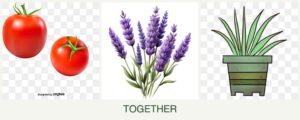
Can you plant onions, garlic and mint together?
Can You Plant Onions, Garlic, and Mint Together?
Companion planting is an age-old practice that gardeners use to optimize growth, deter pests, and improve flavor. When considering onions, garlic, and mint, it’s essential to understand their compatibility. This article will explore whether these plants can thrive together, their growing requirements, benefits, challenges, and best planting practices.
Compatibility Analysis
Yes, you can plant onions, garlic, and mint together, but with some considerations. Onions and garlic, both members of the allium family, share similar growth requirements and can be excellent companions. Mint, on the other hand, is a vigorous herb that can overtake garden beds if not managed properly. The key to successful planting lies in understanding their growth habits, pest control benefits, and nutrient needs.
Growth Requirements
- Onions and Garlic: Prefer full sun, well-drained soil, and adequate spacing to prevent fungal diseases. They are natural pest deterrents, repelling aphids and other harmful insects.
- Mint: Thrives in partial shade to full sun and requires moist, well-drained soil. Its strong aroma can repel pests and attract beneficial pollinators.
Key Factors
- Pest Control: Onions and garlic repel pests that might otherwise target mint.
- Nutrient Needs: All three plants benefit from nutrient-rich soil, but mint’s aggressive growth can deplete resources if not contained.
- Spacing: Mint’s spreading habit requires careful spacing or containment to prevent it from overshadowing slower-growing onions and garlic.
Growing Requirements Comparison Table
| Plant | Sunlight Needs | Water Requirements | Soil pH & Type | Hardiness Zones | Spacing Requirements | Growth Habit |
|---|---|---|---|---|---|---|
| Onion | Full sun | Moderate | 6.0-7.0, well-drained | 3-9 | 4-6 inches | Upright, 12-18 inches tall |
| Garlic | Full sun | Moderate | 6.0-7.0, well-drained | 3-8 | 6 inches | Upright, 18-24 inches tall |
| Mint | Partial shade/full sun | High | 6.0-7.5, moist, well-drained | 3-11 | 12-18 inches | Spreading, 12-24 inches tall |
Benefits of Planting Together
- Pest Repellent Properties: The strong scents of onions, garlic, and mint deter many common garden pests.
- Improved Flavor: While evidence is anecdotal, some gardeners believe that the aromatic oils from mint enhance the flavor of nearby vegetables.
- Space Efficiency: Planting these together in a well-managed bed or container can maximize space, especially if mint is contained.
- Soil Health: Rotating these crops can improve soil health by preventing disease build-up.
Potential Challenges
- Competition for Resources: Mint can outcompete onions and garlic for nutrients and water.
- Different Watering Needs: Mint prefers more moisture, requiring careful watering management.
- Disease Susceptibility: Close planting can increase the risk of fungal diseases.
- Harvesting Considerations: Mint’s rapid growth may complicate harvesting onions and garlic.
Practical Solutions
- Use Containers: Plant mint in containers to control its spread.
- Mulching: Helps retain moisture and suppress weeds.
- Regular Pruning: Keeps mint in check and prevents overshadowing.
Planting Tips & Best Practices
- Optimal Spacing: Ensure at least 12 inches between mint and other plants.
- Timing: Plant onions and garlic in early spring or fall; mint can be planted in spring.
- Container vs. Garden Bed: Use containers for mint to prevent spreading.
- Soil Preparation: Enrich soil with compost and ensure good drainage.
- Companion Plants: Consider planting with carrots or lettuce, which also benefit from the pest-repellent properties of onions and garlic.
FAQ Section
-
Can you plant onions and mint in the same pot?
- It’s best to plant mint separately in a pot to control its spread.
-
How far apart should onions and garlic be planted?
- Space onions 4-6 inches apart and garlic 6 inches apart for optimal growth.
-
Do onions and mint need the same amount of water?
- No, mint requires more consistent moisture than onions.
-
What should not be planted with mint?
- Avoid planting mint with other herbs and vegetables that it can easily overtake.
-
Will mint affect the taste of onions and garlic?
- Mint’s aroma can enhance flavors, but it won’t change the fundamental taste of onions and garlic.
-
When is the best time to plant onions, garlic, and mint together?
- Plant onions and garlic in early spring or fall, and mint in spring after the last frost.
By understanding the compatibility and growing needs of onions, garlic, and mint, you can create a thriving garden space that maximizes the benefits of companion planting while minimizing potential challenges.



Leave a Reply